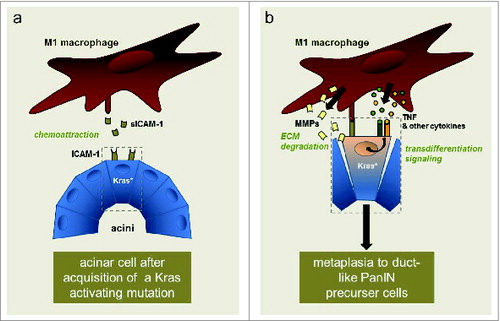Figures & data
Figure 1. Crosstalk of macrophages with mutant Kras-expressing pancreatic acinar cells. Acquisition of an activating Kras mutation (Kras*) in acinar cells leads to expression of ICAM-1. A fraction of the ICAM-1 produced is shed and soluble (sICAM-1). Soluble ICAM-1 can act as a chemoattractant for M1-polarized macrophages (A). Macrophages then may directly interact with acinar cells via membrane ICAM-1. They provide enzymes that allow degradation of extracellular matrix (ECM) and inflammatory cytokines and chemokines that can drive transdifferentiation signaling. This leads to metaplasia of acinar cells to a duct-like phenotype that can give rise to pancreatic intraepithelial neoplastic (PanIN) lesions, which then can further progress to pancreatic cancer (B).

